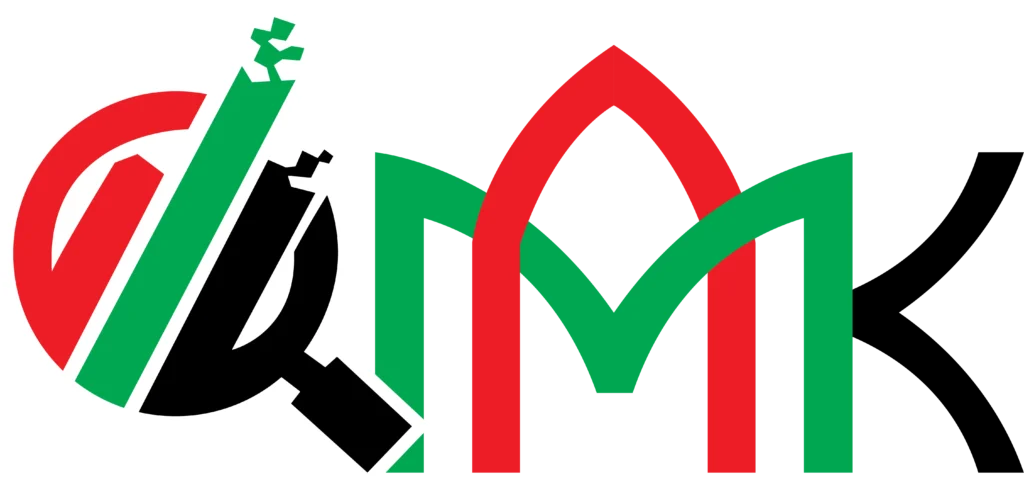Dubai builds a modern tax system with clear goals. The system protects confidence. The system supports growth. The federal levy covers all emirates. Your business reads the rules. Your team applies the rules with care. Your leadership plans with numbers, with documents, and with timelines.
The reform started for tax periods that begin on or after 1 June 2023. A company reviews its financial year. A company finds its first tax period. A company checks the Federal Tax Authority (FTA) clarifications for non-standard first periods. A company registers within the set window. A company files within nine months after year-end.
This guide explains who pays, what’s taxed, how rates apply, how Free Zone entities qualify, when filings fall due, and which controls keep records strong. The language stays simple. The steps stay practical. The examples stay close to real work.
Overview of the New Federal Levy
The UAE introduces a federal corporate levy that runs across Dubai and the other emirates. The regime sets a low headline rate. The regime sets a threshold for small profits. The regime sets special treatment for Free Zone entities that meet conditions.
- Profits up to AED 375,000 face a 0% rate.
- Profits above that threshold face a 9% rate.
- Very large groups may face a domestic minimum top-up from 1 January 2025 financial years, under separate guidance for groups with global revenue at or above €750 million.
A business looks at its accounts. A business computes net profit after allowable costs. A business adjusts profit for tax rules. A business applies the threshold and then applies the rate.
Who Must Register and When
Most resident juridical persons must register. New incorporations register within the stated days. Non-residents with a permanent establishment register after nexus arises. Natural persons register when business turnover crosses AED 1,000,000 in a Gregorian year. The FTA Decision effective 1 March 2024 sets staged deadlines by taxpayer type. Your finance lead checks the exact window. Your team files the registration form with supporting documents.
Example timeline:
A company with year 1 Jan 2024 – 31 Dec 2024 files its return by 30 Sep 2025. The nine-month rule gives a clear outer date. Your calendar marks earlier internal cut-offs.
What Income the Levy Covers
The levy applies to taxable profit. Taxable profit starts from accounting profit under IFRS or approved standards. Then the company makes specific adjustments. The company excludes exempt items. The company adds back non-deductible items. The company respects transfer-pricing results for related-party dealings.
Common adjustments include entertainment caps, fines that can’t be deducted, and fair value gains that follow set treatment. Your trial balance feeds a computation sheet. Your computation sheet feeds the return.
Rate, Threshold, and Relief for Small Profits
The system sets two brackets:
- Up to AED 375,000: 0%.
- Above AED 375,000: 9%.
Small Business Relief can apply for eligible periods when the turnover sits under the set ceiling. A taxpayer studies the FTA relief notice. A taxpayer checks election conditions. A taxpayer tests aggregation rules for connected persons. Your controller keeps evidence that supports the choice.
Free Zones: Incentives with Conditions
Free Zones remain central to trade, logistics, tech, and media. A Free Zone Person holds a license from a zone authority. The federal levy preserves incentives for real activity. The law uses the concept of a Qualifying Free Zone Person (QFZP). A QFZP pays 0% on qualifying income. A QFZP pays 9% on non-qualifying income. A non-QFZP pays 9% above the threshold on all taxable profit.
A QFZP must:
- Be a juridical person with a valid zone license.
- Keep adequate presence in the UAE, with staff, with premises, and with costs.
- Earn qualifying income as listed in decisions, with de-minimis comfort for small non-qualifying amounts.
- Follow transfer-pricing rules and keep documentation on time.
- Not elect to be taxed as a mainland person.
If a QFZP breaches a condition in a tax period, the status falls away from the start of that period. The 9% rate then applies under the general rule.
Mainland Dealings and Branch Effects
A Free Zone entity may sell to mainland customers. That stream usually becomes non-qualifying unless a specific exception applies. A Free Zone entity may open a mainland branch. The branch profit sits in the 9% pool. The entity can still keep QFZP status for other qualifying streams when systems track the separation.
Your contracts state delivery locations with clarity. Your invoices show the right supply point. Your ERP tags customers by jurisdiction, by branch, and by activity. The tags protect the 0% zone where rules allow it.
Compliance Map: From Books to Return
Strong compliance starts with clear roles. Your CFO owns the policy. Your financial controller owns the numbers. Your tax manager owns the return. Your external auditor tests the file. Your adviser checks interpretations.
Core steps:
- Set your tax calendar and assign deadlines.
- Confirm registration status for each legal entity.
- Reconcile accounting profit to taxable profit.
- Map revenue streams to qualifying or non-qualifying.
- Prepare transfer-pricing files for related-party flows.
- Approve the computation with sign-offs and minutes.
- File the return before the nine-month limit.
- Retain records for the statutory period.
Record-Keeping: Evidence that Withstands Review
The FTA expects complete support. Your company keeps:
- Audited financial statements with notes.
- Trial balance and general ledger extracts.
- Contracts, purchase orders, and invoices.
- HR files that prove headcount and roles.
- Lease agreements for premises in the UAE.
- Board minutes that show strategic decisions made in the country.
- Transfer-pricing master file and local file where thresholds trigger.
- Mapping schedules for Free Zone qualifying tests.
Files sit in a structured folder. Files link to computation lines. Files match dates and amounts. Review becomes easier. Audit becomes faster.
Economic Substance Regulations (ESR) and Tax
ESR requires real activity for relevant sectors. The corporate levy moves with the same spirit. A firm that wants the 0% Free Zone benefit proves substance with people, with assets, and with costs inside the UAE. Your ESR report supports the tax position. Your tax return references the same facts.
Transfer Pricing: Arm’s Length as a Daily Habit
Related-party prices must follow the arm’s length standard. Your policies explain functions, assets, and risks. Your benchmarks show ranges. Your intercompany agreements mirror the policy. Your invoices match the agreements. Your files demonstrate the link between the story and the numbers.
The arm’s length principle protects the base. The arm’s length principle reduces disputes. The principle also supports dividends and funding flows.
Large Groups and the Domestic Minimum Top-Up
From financial years that start on or after 1 January 2025, the Domestic Minimum Top-Up Tax (DMTT) can apply to groups that meet the global revenue threshold under the relevant rules. The local top-up aligns with global minimum standards. A large group should assess scope, safe harbors, and filing mechanics. A group should coordinate its Pillar Two workstream with its corporate levy workstream.
Example: Timeline and Filing Flow
Imagine a company with year-end 31 December 2024.
- Jan–Mar 2025: Close accounts and start audit.
- Apr–Jun 2025: Draft tax computation and transfer-pricing files.
- Jul 2025: Board reviews the numbers and signs minutes.
- Before 30 Sep 2025: File the return and maintain the archive.
A visual plan reduces pressure. A monthly checklist stops last-minute surprises.
Deductibility: Cost Rules that Matter
A company claims ordinary and necessary business costs. The law may cap some items. The law may exclude fines and penalties. The law may require timing adjustments. Your ledger marks sensitive accounts. Your policy defines documentation thresholds. Your approvers check every line that needs extra care.
Cash Flow Planning Under the New Levy
Tax payments affect cash. Your forecast includes estimated payments, provisions, and covenant tests. Your pricing includes the cost of tax on non-qualifying streams. Your bids reflect the new reality. A simple model with scenarios helps your team react to mix changes between mainland and Free Zone sales.
Common Errors and How to Avoid Them
- Late registration: Track entity life-cycle events.
- Wrong status for a Free Zone entity: Re-test QFZP conditions each year.
- Weak transfer-pricing file: Build files contemporaneously, not after the fact.
- Poor mapping of revenue: Tag customers, branches, and locations in the ERP.
- Loose ESR records: Keep board minutes and substance evidence in one vault.
A short internal audit saves a long external review. A tidy archive saves time and cost.
Practical Steps for New Investors in Dubai
- Select the right Free Zone or mainland setup for your model.
- Read the license scope with attention to activity wording.
- Design the supply chain with customs and designated-zone rules in mind.
- Separate qualifying activity from mainland streams where feasible.
- Implement a finance playbook for period-end and for filings.
- Train sales and operations on contract terms that affect tax.
A smart setup keeps incentives intact. A disciplined routine keeps filings accurate.
Risk Management and Governance
Set a tax control framework. Document roles. Define escalation paths. Use KPIs to track status:
- Share of qualifying revenue versus total.
- On-time completion of transfer-pricing files.
- ESR test results.
- Filing timeliness and penalty log.
- Evidence pack completeness rate.
Governance turns a rule into a habit. A habit turns into confidence.
Sector Notes: Logistics, Tech, and Services
Logistics in a designated zone: Distribution to foreign markets under customs control may qualify. Mainland drops may not. Contracts and customs proofs decide the result.
Technology and remote support: Services to non-residents may qualify when the activity fits listed items. On-site mainland work likely forms non-qualifying income.
Professional services: Cross-border advisory to non-residents may pass tests. Services consumed in the mainland often fall outside the 0% ring.
Related Posts:
A sector map helps the sales team quote with precision.
What Can Help — Mubarak Al Ketbi (MAK) Auditing
Mubarak Al Ketbi (MAK) Auditing supports your setup, your classification, your documentation, and your filing. Our team maps your revenue to qualifying or non-qualifying streams with clarity. Our team builds transfer-pricing files that match your facts. Our team aligns ESR evidence with your license and your operations. Our team prepares your return on time and with accuracy. If you want a steady partner, we stand ready. Remember, every cloud has a silver lining.
For more information (bullet points as requested)
- Visit our office: Saraya Avenue Building – Office M-06, Block/A, Al Garhoud – Dubai – United Arab Emirates
- Contact / WhatsApp: +971 50 276 2132




